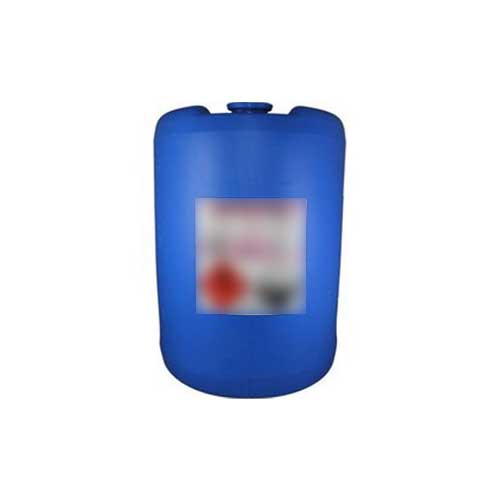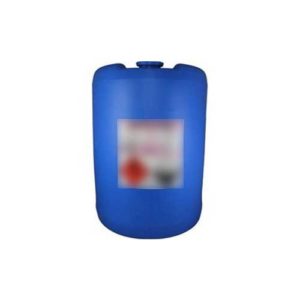CYCLOHEXANONE (C6H10O)
ABOUT:
Cyclohexanone is used as a solvent in degreasers for automotive applications and cleaners. It is known for its excellent solvency, which makes it useful for removing grease, oil, and other contaminants from metal parts and surfaces. In addition to its use in automotive degreasers, cyclohexanone is also commonly used in other industrial cleaning applications, as well as in the production of resins, plastics, and synthetic fibers. It is also a relatively low-toxicity solvent, making it a safer alternative to other solvents such as trichloroethylene.
PHYSICAL PROPERTIES:
Appearance: colorless liquid
Odor: ketone odor
Molecular weight: 98.15 g/mol
Boiling point: 155.8°C
Melting point: 43-44°CDensity: 0.98 g/cm³ (20°C)
Refractive index: 1.483 (20°C)
Flash point: 60°C (closed cup)
CHEMICAL PROPERTIES:
- Is soluble in water and organic solvents like ethanol and acetone
- Cyclohexanone is highly reactive and is used as a starting material in the manufacture of various chemicals, such as phenol, cyclohexanol, and caprolactam.
MANUFACTURING METHODS:
- Oxygen oxidation: Cyclohexanol is treated with oxygen and a catalyst, such as a metal oxide, to form cyclohexanone.
- KMnO4 oxidation: This method involves treating cyclohexanol with potassium permanganate, which oxidizes the alcohol to the ketone.
- PCC oxidation: PCC stands for pyridinium chlorochromate, which is a strong oxidizing agent. Cyclohexanol is treated with PCC to form cyclohexanone.
- Bio-oxidation: Microorganisms such as bacteria and fungi can also be used to oxidize cyclohexanol to cyclohexanone in a process known as bio-oxidation.
APPLICATIONS:
- Cyclohexanone is used as a solvent in degreasers for automotive applications and cleaners. It is known for its excellent solvency, which makes it useful for removing grease, oil, and other contaminants from metal parts and surfaces. In addition to its use in automotive degreasers, cyclohexanone is also commonly used in other industrial cleaning applications, as well as in the production of resins, plastics, and synthetic fibers. It is also a relatively low-toxicity solvent, making it a safer alternative to other solvents such as trichloroethylene.
- In furniture care products, cyclohexanone can be used as a solvent for polishes, waxes, and other treatments that are designed to protect and preserve the finish of wooden furniture. It is particularly effective for dissolving old wax build-up and preparing surfaces for refinishing.
- Cyclohexanone is used as a starting material in the synthesis of several dyes, including azo dyes and anthraquinone dyes.
- In the production of Nylon 6, cyclohexanone is reacted with caprolactam, in the presence of a catalyst to form Nylon 6 polymer. The reaction is known as the aminocarboxylic acid polymerization.
- In the paint industry, cyclohexanone is used as a solvent for a variety of coatings and inks, including alkyd resins, nitrocellulose, and polyurethane. It can be used to adjust the viscosity of the coating, and to improve the flow and leveling properties of the paint.
- Cyclohexanone is also used as a solvent in the formulation of certain insecticides and herbicides.
SAFETY MEASURES:
- Wear protective gloves, eye protection, and a laboratory coat to minimize skin and eye exposure.
- Use adequate ventilation to minimize inhalation of the fumes. If possible, work in a fume hood to provide additional protection.
- Store cyclohexanone in a cool, dry, and well-ventilated area, away from heat sources and flames. Keep the container tightly closed when not in use.
- Keep fire extinguishers nearby in case of a fire. Cyclohexanone is flammable and should not be stored near heat sources or sparks.
- In the event of a spill, evacuate the area and wear protective clothing before starting cleanup. Use absorbent material to contain the spill and avoid creating dust.
- Dispose of used containers and any unused portion of cyclohexanone in accordance with local, state, and federal regulations.
- In case of skin contact, wash the affected area thoroughly with soap and water. If the chemical gets into your eyes, rinse them with water for at least 15 minutes and seek medical attention. In case of inhalation, move to an area with fresh air and seek medical attention if symptoms persist.





Reviews
There are no reviews yet.